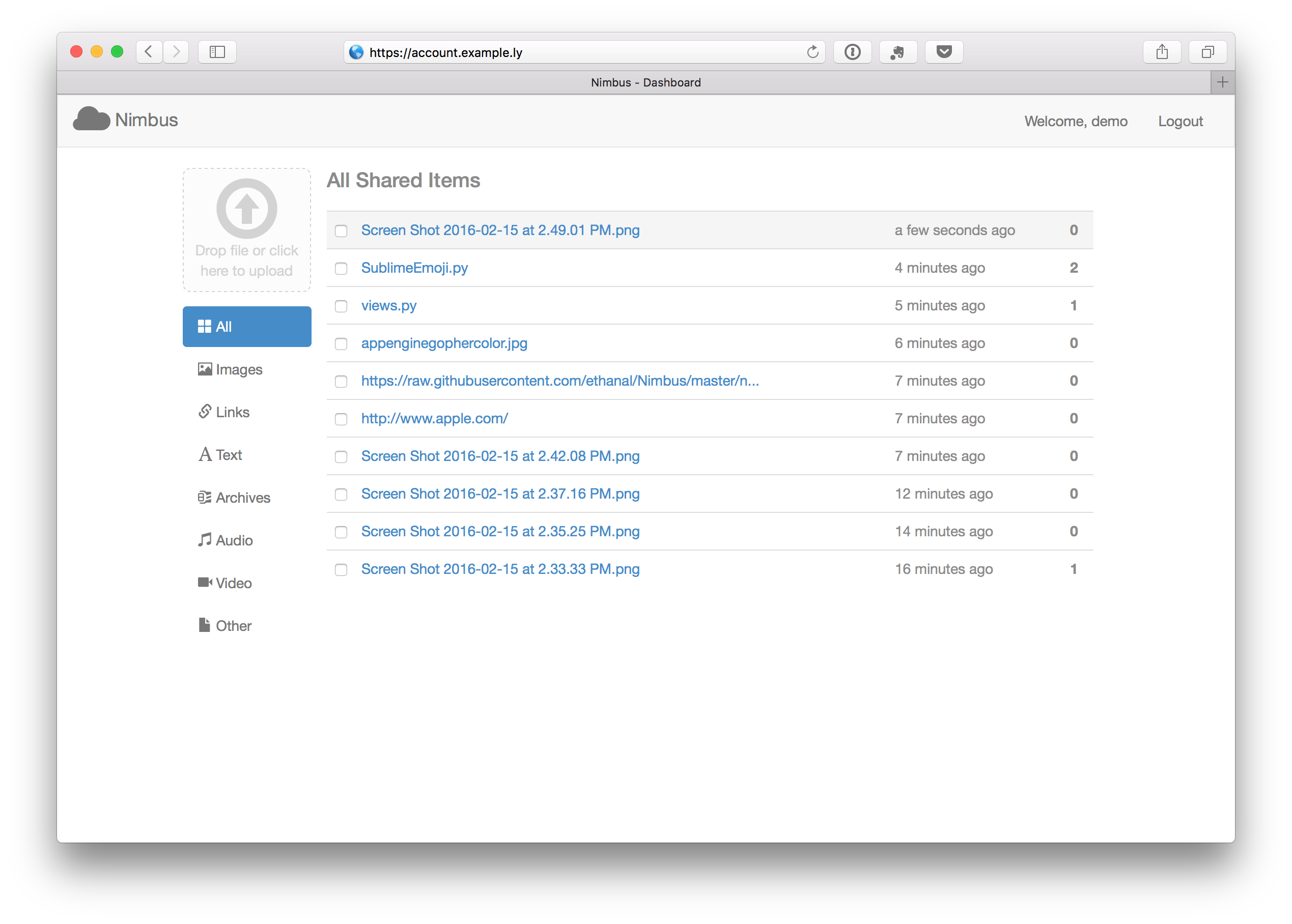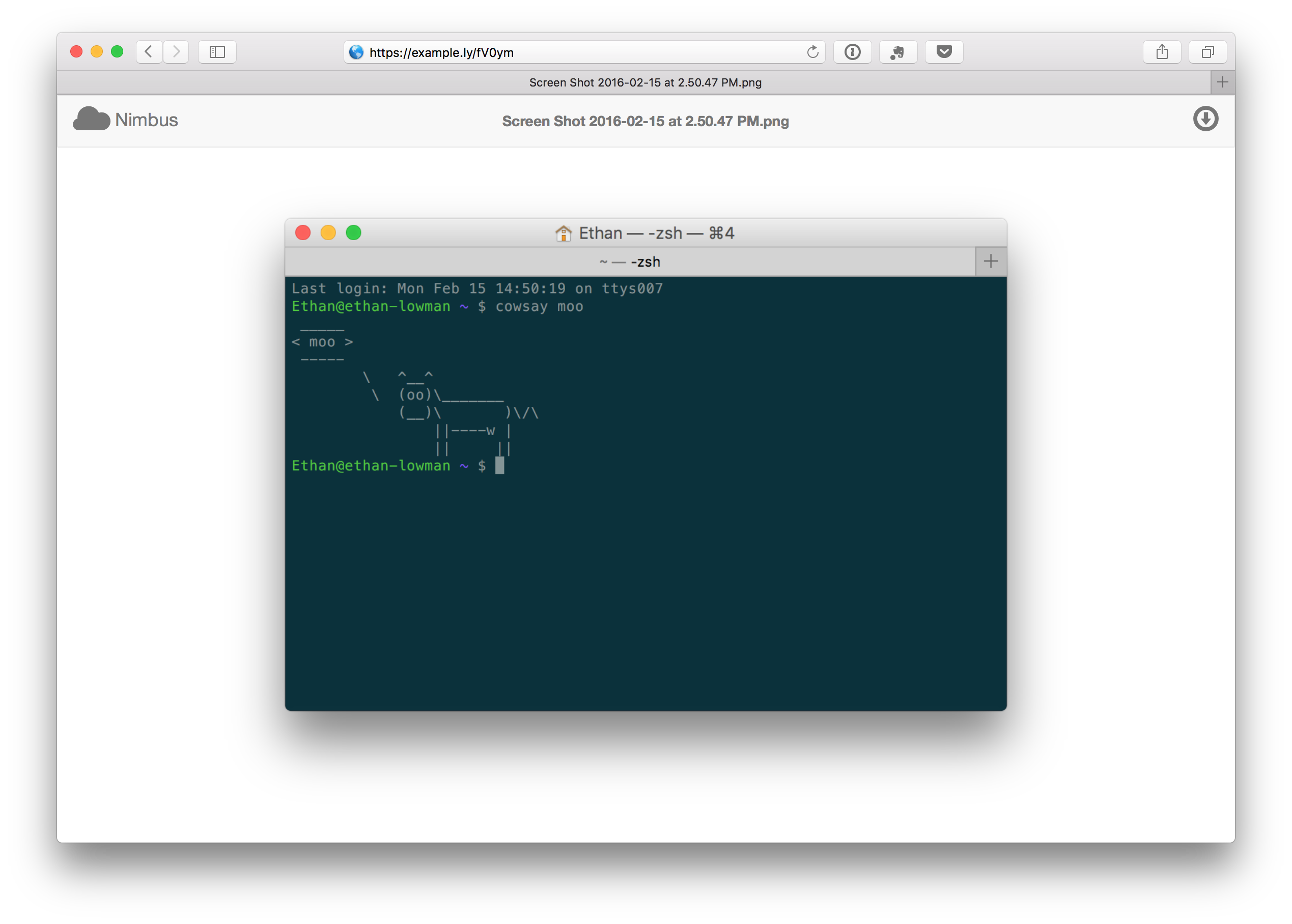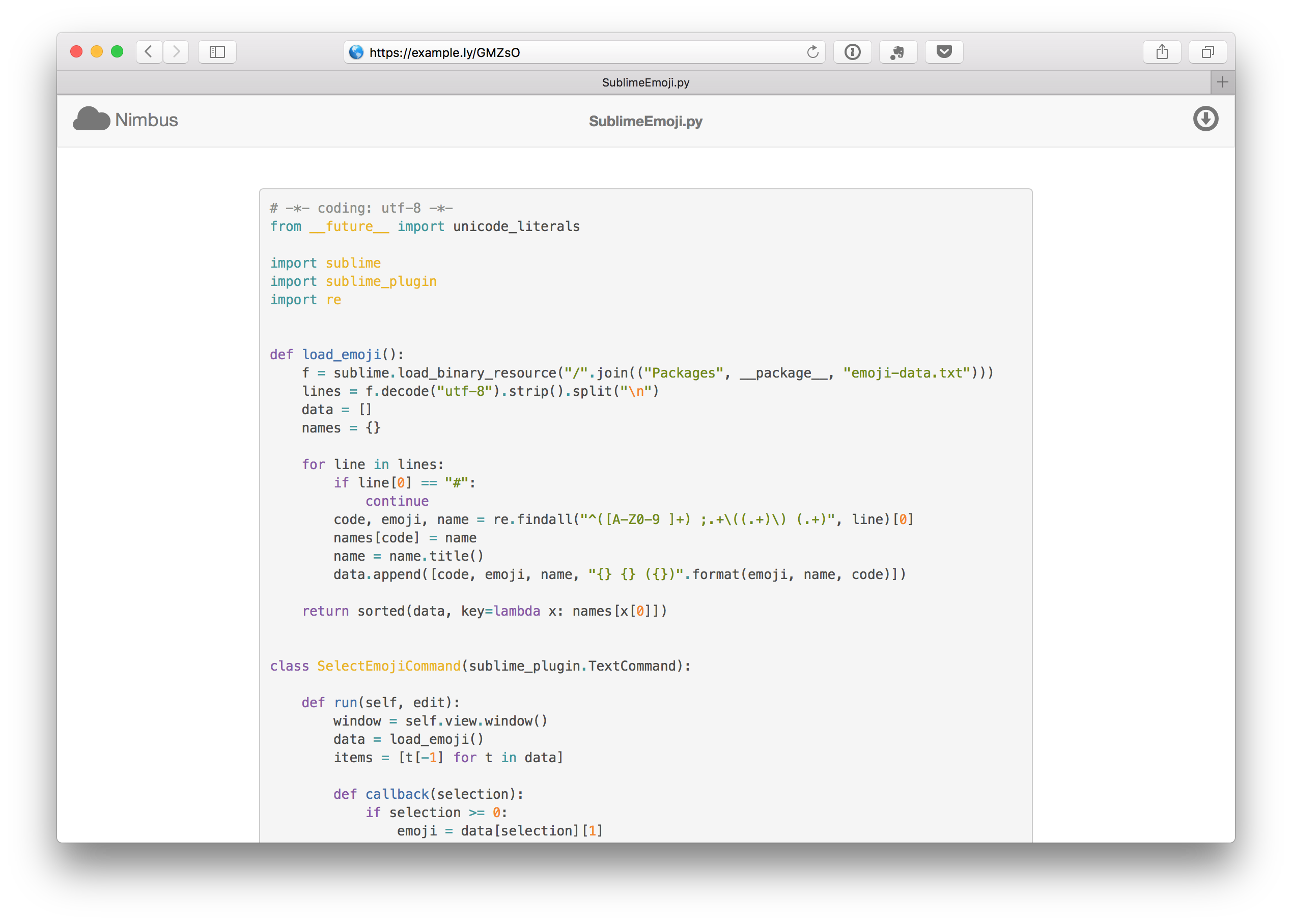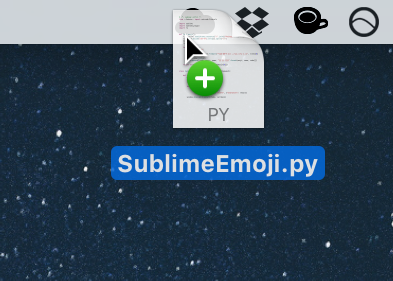Nimbus is a private file sharer and URL shortener. Heavily inspired by Cloudapp, Nimbus is a free and open source solution to file sharing and URL shortening that you can host yourself and fully control.
Nimbus consists of several components:
- A website that displays sharing pages for generated links and redirects shortened URLs to their targets
- A website to manage shared items
- An API to manipulate shared items
- A Mac OS X menubar app to upload files and shorten links
The menubar app is only compatible with OS X 10.9 and up since it is written in Swift. The files are stored in Amazon S3, so you must have an AWS account.
 |
 |
 |
 |
- Share pages that show file previews or redirect to the shortened link
- Image file previews
- Text file previews with automatic syntax highlighting if applicable
- Screenshots are automatically uploaded and the share link is copied to the clipboard
- Drag a file or text to the menubar icon to upload it and copy the share link to the clipboard
- Drag a URL to the menubar icon to create a shortened link and copy it to the clipboard
- Keep track of view counts for files and shortened URLS
To set up the Django app, perform the following steps on your server (assumes pip, virtualenv, and MySQL are already installed)
-
Create a virtualenv and activate it
-
Clone the repository (from here on, it is assumed that the respository's location is
/usr/local/www/Nimbus) -
While in the repository root, install the Python requirements by running
pip install -r requirements/production.txt
-
Create a database and grant a user full access to it.
-
Follow the instructions in
nimbus/settings/secret.sample.pyto create a secrets file with your MySQL and Amazon S3 credentials -
Set up the environment for the Django app by running
export PRODUCTION=TRUE -
Set up the database and create your user by running
./manage.py syncdb -
Start a Django shell (
./manage.py shell) and run the following commands, replacingexample.comwith your domain namefrom django.contrib.sites.models import Site Site.objects.update(name="example.com", domain="example.com")
-
Collect static files by running
yes yes | ./manage.py collectstatic
Make sure you have a domain name configured with the following records:
@ IN A <IP address of your server>
api CNAME @
account CNAME @
files CNAME files.<your domain name>.s3.amazonaws.com.
Also make sure you have an Amazon S3 bucket called files.<your domain name>
The recommended setup for serving Nimbus is Gunicorn managed by Supervisor with nginx as a reverse proxy. Configuration requirements are as follows.
- Nginx must be listening on the subdomains
accountandapiof your domain as well as the root domain. Forward all of this traffic to Gunicorn - the Django app handles the subdomain routing. - The attribute
client_max_body_sizemust be set in the nginx config to a sufficiently large value to allow uploads of big files. - Static file requests (
/static/) should be aliased tonimbus/collected_staticin the repository root - Supervisor must call the version of gunicorn in your virtualenv
[program:nimbus]
directory = /usr/local/www/Nimbus
user = nobody
command = /usr/local/virtualenvs/Nimbus/bin/gunicorn nimbus.wsgi:application --user=nobody --workers=1 --bind=127.0.0.1:8080
environment = PRODUCTION=TRUE
stdout_logfile = /var/log/sites/nimbus.gunicorn.log
stderr_logfile = /var/log/sites/nimbus.gunicorn.log
autostart = true
autorestart = trueserver {
listen 80;
server_name example.com account.example.com api.example.com;
return 301 https://$host$request_uri;
}
server {
listen 443 ssl;
server_name example.com account.example.com api.example.com;
ssl on;
ssl_certificate /usr/local/certs/example.com.crt;
ssl_certificate_key /usr/local/certs/example.com.key;
client_max_body_size 1024M;
access_log /var/log/sites/nimbus.access.log;
error_log /var/log/sites/nimbus.error.log;
location /favicon.ico {
alias /usr/local/www/Nimbus/nimbus/static/img/favicon.ico;
}
location /static/ {
alias /usr/local/www/Nimbus/nimbus/collected_static/;
}
location / {
rewrite ^/((?!(api-auth|admin))(.*))/$ /$1 permanent;
proxy_pass http://127.0.0.1:8080;
proxy_set_header X-Forwarded-Host $host;
proxy_set_header Host $host;
proxy_set_header X-Real-IP $remote_addr;
proxy_set_header X-Forwarded-Proto $scheme;
}
}API documentation can be found here.
Ethan Lowman
